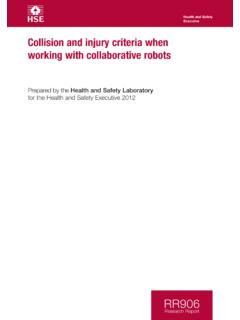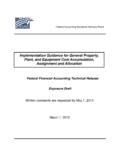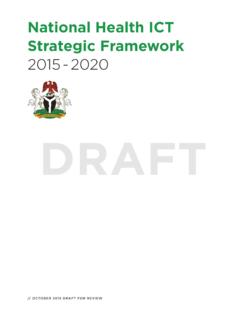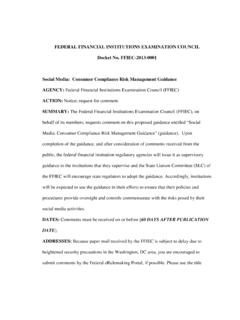Transcription of Reproductive hazards literature search: Summary
1 Health and Safety executive Reproductive hazards literature search: Summary Prepared by the Health and Safety Laboratory for the Health and Safety executive 2013. RR979. Research Report Health and Safety executive Reproductive hazards literature search: Summary Sarah Binch Health and Safety Laboratory Harpur Hill Buxton Derbyshire SK17 9JN. The aim of this work was to establish a current picture of the main documented factors that may be associated with Reproductive health, relevant to UK workers. The approach taken was to assess published reviews of literature on Reproductive health and gender for workers in the UK, including chemical hazards and risks, as well as other factors. A limited number of papers were identified in this literature search. From these, a number of occupational exposures or risks were found to have been well-documented as being an issue to both male and female Reproductive outcomes.
2 These include exposure to chemicals, exposure to radiation, heavy workload, heat, awkward/ sedentary postures, irregular work schedules, and psychosocial work stress. The reviews also acknowledge there are probably a variety of other substances or risks where the impact of exposure on Reproductive health is currently unknown, and are therefore not well-documented in the literature . This is due to the changing nature of workplaces and new technologies. The evidence for some of the risks is also not conclusive in the literature stress, heat and posture, as it is sometimes not possible to directly link occupational exposures to Reproductive outcomes without removing other factors such as lifestyle and genetics. This report and the work it describes were funded by the Health and Safety executive (HSE). Its contents, including any opinions and/or conclusions expressed, are those of the authors alone and do not necessarily reflect HSE policy.
3 HSE Books Crown copyright 2013. First published 2013. You may reuse this information (not including logos) free of charge in any format or medium, under the terms of the Open Government Licence. To view the licence visit , write to the Information Policy Team, The National Archives, Kew, London TW9 4DU, or email Some images and illustrations may not be owned by the Crown so cannot be reproduced without permission of the copyright owner. Enquiries should be sent to ii KEY MESSAGES. This review looked for information to ensure HSE's knowledge about Reproductive health and gender is up to date. The review did not find anything of immediate concern but rather a need to keep exposure to some things as low as possible. The information which has been found could be used to check the HSE webpages are not missing any existing, well documented known risks.
4 The reviews also acknowledge there are probably a variety of other substances or risks where the impact of exposure on Reproductive health is currently unknown, and are therefore not well documented in the literature . This is due to the changing nature of workplaces and new technologies. The evidence for some of the risks is also not conclusive in the literature stress, heat and posture; as it is sometimes not possible to directly link occupational exposures to Reproductive outcomes without removing other factors such as lifestyle and genetics. The difficulties that have been experienced in identifying reviews of the literature published on Reproductive health and gender ( hazards and risks) for workers in the UK within the last 5 years, may indicate that this is a problematic area to study due to the breadth of information on the topic and one which is currently attracting limited academic interest.
5 ILi executive Summary . Background The Health and Safety executive (HSE) board has approved a Single Equality Scheme in order to comply with its statutory equality duties. The External Diversity Action Plan sets out actions HSE intends to take forward in more detail. It includes an action to develop gender specific web pages. The web pages will include diversity specific messages, and where appropriate, may include information on control measures that can improve health and safety outcomes. During 2010, the HSE External Diversity team began to put together content for a series of gender specific web pages. These covered a range of issues, including Reproductive health and gender. The aim of this study was to carry out an assessment of published reviews of literature on Reproductive health and gender ( hazards and risks) for workers in the UK (to include both chemical hazards and risks, and all other factors).
6 The study aimed to identify what recent reviews of the literature currently exist on Reproductive health and gender, hazards and risks, for workers in the UK. It also tried to identify any gaps in the literature , and where further research may be required. The study aimed to establish a current picture of the main documented factors that may be associated with Reproductive health, relevant to UK workers, to inform the development of gender-specific information on the HSE website. It is not a systematic review of individual studies on Reproductive health. Method Due to the volume of research in the topic area of Reproductive health it was decided that the search would need appropriate parameters to focus the results. However, the original search terms failed to yield sufficient material so, after discussion and agreement, the literature search was repeated in total three times, with adjustments to the search criteria each time.
7 These iterations were conducted in collaboration with the HSE customer. The final papers that were selected for inclusion in this review met the following criteria: A review of the literature , rather than focusing on individual studies;. Focus on research evidence from human populations only;. Research from 2006 onwards;. Covering UK research. Findings A total of six relevant papers were found, reviewed and a detailed bibliography was also created. Leading to the conclusion there have not been many reviews that have been completed within the last five years on this topic area. The bibliography contains a number of papers that were outside the search parameters but were considered to be of use as they are relevant to the topic area and recent pieces of research. iY. From the limited number of papers identified in this literature search it is clear that there are a number of occupational exposures or risks that have been well documented as being an issue to both male and female Reproductive outcomes.
8 These include exposure to: Chemicals Pesticides Heavy metals Solvents Radiation Heavy workload Heat Awkward/ sedentary postures Irregular work schedules Psychosocial work stress Conclusions The study found some clearly defined hazards and risks to fill gaps in HSE's knowledge about Reproductive health and gender. The information generated from this study could be used to check that the webpages are not missing any existing, well documented known risks. v CONTENTS PAGE. 1. INTRODUCTION .. 1 Background 1 Aims and objectives 1 2. METHODOLOGY .. 2 Stages of literature search 2 3. RESULTS .. 3 Summary of papers reviewed 3 Answers to research questions 5 Limitations of searches 7 4. REFERENCES .. 8 5. BIBLIOGRAPHY .. 9 6. APPENDIX .. 12 Search terms 12 YLL. 1. INTRODUCTION. BACKGROUND. The Health and Safety executive (HSE) board has approved a Single Equality Scheme in order to comply with its statutory equality duties.
9 The External Diversity Action Plan sets out actions HSE intends to take forward in more detail. It includes an action to develop gender specific web pages. The web pages will include diversity specific messages, and where appropriate, may include information on control measures that can improve health and safety outcomes. During 2010, the HSE External Diversity team began to put together content for a series of gender specific web pages. These covered a range of issues, including Reproductive health and gender. HSE identified that their corporate knowledge on Reproductive health and gender was out of date, and were concerned that the initial draft content for the Reproductive health web pages may contain some gaps. There was also a suggestion that the draft web page content may be too focused on the chemical aspects of Reproductive health, at the expense of other factors that may have an influence on Reproductive health (such as stress, musculoskeletal disease, heat/temperature, noise, physical threats and shiftwork).
10 HSE would like to ensure that the content of the HSE web pages is based on the most recently documented information on Reproductive health and gender. A number of research questions were identified: 1. What reviews of the literature have been published on Reproductive health ( hazards and risks) and gender, in the UK workforce, within the last 5 years? 2. What is the quality of the reviews? 3. Based on the literature , what factors are associated with Reproductive health? 4. What is the strength of evidence for any associations between each factor and Reproductive health? 5. Are there any gaps in the research? If so what are they? 6. Is there any evidence of the current state of Reproductive health in the UK workforce? If so, what it this? 7. What further research (if any) is required on Reproductive health in the UK workforce? AIMS AND OBJECTIVES.
















